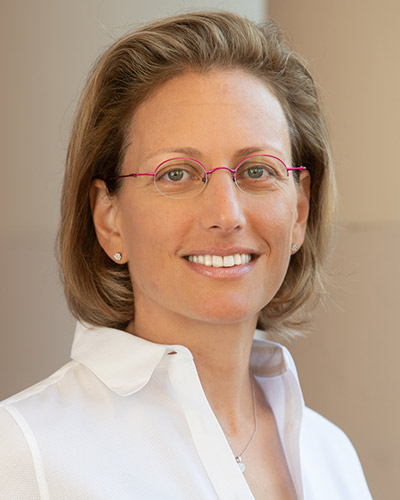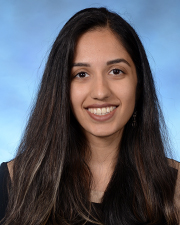June 28, 2023 | Heide Aungst
Resilience. Patience. Perseverance.
Those are the traits shared by the 29 women STEM leaders—including three from the University of Maryland School of Medicine (UMSOM)—featured in the new book Lessons Learned: Stories from Women Leaders in STEM, according to its author Deborah Shlian, MD ’72, MBA.
.jpg) “I was frankly a little surprised that so many of the women said that their career journeys had been improbable,” says Dr. Shlian. “Several took a few detours before finding their passion, and more than a few encountered stereotypes that discourage young girls from developing interests and skills in math and science.”
“I was frankly a little surprised that so many of the women said that their career journeys had been improbable,” says Dr. Shlian. “Several took a few detours before finding their passion, and more than a few encountered stereotypes that discourage young girls from developing interests and skills in math and science.”
Dr. Shlian says she was inspired to put together the book by Claire Fraser, PhD, the Dean E. Albert Reece Endowed Professor in the Department of Medicine at the University of Maryland School of Medicine (UMSOM), and the Founding Director of the Institute for Genome Sciences (IGS).
“Dr. Shlian had published a book on women leaders in medicine, so I suggested she do one on women in scientific fields,” says Dr. Fraser. “I was honored to be included in the book, as well.”
 In addition to Dr. Fraser, the book features Ronna Hertzano, MD, PhD, a Clinical Professor at UMSOM and Affiliate Faculty at IGS, who also is Chief of the Neurotology Branch in The National Institute on Deafness and Other Communication Disorders at NIH, and Aishwarya Iyer, an MD/PhD candidate at UMSOM.
In addition to Dr. Fraser, the book features Ronna Hertzano, MD, PhD, a Clinical Professor at UMSOM and Affiliate Faculty at IGS, who also is Chief of the Neurotology Branch in The National Institute on Deafness and Other Communication Disorders at NIH, and Aishwarya Iyer, an MD/PhD candidate at UMSOM.
Each of the 29 women featured wrote their own stories. Dr. Fraser’s is in Chapter Six: The Road Less Traveled, an homage to the Robert Frost poem that opens the chapter. She quotes Frost throughout, including these prophetic lines: “Being the boss anywhere is lonely. Being a female boss in a world of mostly men is especially so.”
She talks about her passion for science being ignited in ninth grade by a teacher and then assuming she would go to medical school, even applying to some.
“I had an epiphany that what I really wanted to do was pursue a research career,” she says. “In a hasty and very uncharacteristic way, I applied to a handful of graduate schools and chose the State University of New York at Buffalo.”
One of the main lessons she learned, she recalls, was early in her career while working at NIH.
“I learned how to be fearless in approaching scientific research,” she says. “It’s all too easy not to pursue the most difficult experiments for fear that things won’t work.”
The chapter continues step-by-step through Dr. Fraser’s stellar scientific career, which includes a long list of sequencing firsts in genomics, including founding the field of microbial genomics.
Ronna Hertzano, MD, PhD, is featured in Chapter Thirteen: Game Changer.
Dr. Hertzano’s early influences came from both her parents. Her father ran the family business of manufacturing the game Rummikub, created by her grandfather who was living in Romania in the 1940s when playing cards were outlawed. The game uses tiles instead and combines elements from rummy, dominoes, mah-jongg, and chess. Her mother—who started a PhD program in Audiology but was never able to finish due to moves between Israel and the United States for the game business—worked to develop tools for early detection of hearing loss in children and implemented Israel’s first hearing screenings for newborns.
A national champion long jumper, she considered joining the family business, but knew how much she had loved biology since middle school. It was her mother who first suggested she go to medical school. She never considered a PhD, until she recognized the passion ignited in her from working with mice with inner-ear problems in research labs while in school.
“Once I found a home at IGS, with the mentorship and unwavering support of Claire Fraser, I knew that it would be possible to combine science and research, along with working with patients, to advance discovery of treatments for patients with hearing loss and inner ear disease” says Dr. Hertzano. “The genetics of the ear fascinated me, and as more tools were developed to understand this, I was hooked.”
 While at IGS, Dr. Hertzano created gEAR (gene Expression Analysis Resource), a genomic database with a variety of visualization and analysis tools for scientists to share and analyze gene expression data relating to the ear and hearing loss.
While at IGS, Dr. Hertzano created gEAR (gene Expression Analysis Resource), a genomic database with a variety of visualization and analysis tools for scientists to share and analyze gene expression data relating to the ear and hearing loss.
Aishwarya Iyer, MD/PhD candidate at UMSOM is featured in Chapter 15: Finding the Opportunity in Rejection.
One example of rejections she faced came as an undergraduate, when she applied to 17 summer research internships across the country and was turned down by all of them.
“Little did I know those rejections were one of the best things that could have happened,” Ms. Iyer says. She instead looked within her own campus at the University of Maryland Baltimore County (UMBC) and found a summer internship working in a Howard Hughes Medical Institute (HHMI) lab, to understand the molecular mechanisms that dictate the fate and function of the HIV-1 genome in viral replication, which was eventually published in Science. That internship continued for over three years until she graduated and chose UMSOM to pursue her MD/PhD.
Admittedly an introvert, Ms. Iyer says some of the many lessons she has learned along the way is not to fear speaking up, especially in asking questions that promote your scientific knowledge and growth, as well as to seek out mentors and continue to share your work with them. But, she adds, being an introvert is not a bad thing as it shifts her focus to being great listener, team-player, and detail-oriented–-skills that have helped her in both her scholarly and leadership roles.
Ms. Iyer is currently a PhD candidate in the Kontrogianni Lab, investigating the molecular pathogenesis of novel mutation in a cytoskeletal protein that results in a recently identified myopathy associated with tremor, for which there are no treatments. She says she specifically chose her lab because of the outstanding mentorship of her thesis advisor, Aikaterini (Katia) Kontrogianni-Konstantopoulos, PhD, Professor of Biochemistry and Molecular Biology at UMSOM.
“I would not be where I am without my advocates and mentors. They continue to provide necessary guidance and support in my journey to be the first in my family to pursue an MD or PhD,” Ms. Iyer says.
Ms. Iyer ultimately wants to pay forward the importance of mentoring others. “I want to mentor the next generation of scholars and provide any advice, guidance, and opportunities that will aid them in their personal and professional development,” she says. “I want to be someone who all aspiring scientists, leaders, and scholars can consider to be a good mentor and role model.”
“My hope for the book is that girls and women will find someone whose story they can identify with,” says author Dr. Shlian. “Someone who will not only inspire them to consider becoming scientists, but also to strive to attain leadership roles within their fields.”
The book can be ordered from Amazon or from The American Association for Physician Leadership.
About the Institute for Genome Sciences
The Institute for Genome Sciences (IGS) at the University of Maryland School of Medicine has revolutionized genomic discoveries in medicine, agriculture, environmental science, and biodefense since its founding in 2007. IGS investigators research areas of genomics and the microbiome to better understand health and disease, including treatments, cures, and prevention. IGS investigators also lead the development of the new field of microbial forensics. IGS is a leading center for major biological initiatives currently underway including the NIH-funded Human Microbiome Project (HMP) and the NIAID-sponsored Genomic Sequencing Center for Infectious Diseases (GSCID). Follow us on Twitter @GenomeScience.
About the University of Maryland School of Medicine
Now in its third century, the University of Maryland School of Medicine was chartered in 1807 as the first public medical school in the United States. It continues today as one of the fastest growing, top-tier biomedical research enterprises in the world — with 46 academic departments, centers, institutes, and programs, and a faculty of more than 3,000 physicians, scientists, and allied health professionals, including members of the National Academy of Medicine and the National Academy of Sciences, and a distinguished two-time winner of the Albert E. Lasker Award in Medical Research. With an operating budget of more than $1.3 billion, the School of Medicine works closely in partnership with the University of Maryland Medical Center and Medical System to provide research-intensive, academic, and clinically based care for nearly 2 million patients each year. The School of Medicine has nearly $600 million in extramural funding, with most of its academic departments highly ranked among all medical schools in the nation in research funding. As one of the seven professional schools that make up the University of Maryland, Baltimore campus, the School of Medicine has a total population of nearly 9,000 faculty and staff, including 2,500 students, trainees, residents, and fellows. The combined School of Medicine and Medical System (“University of Maryland Medicine”) has an annual budget of over $6 billion and an economic impact of nearly $20 billion on the state and local community. The School of Medicine, which ranks as the 8th highest among public medical schools in research productivity (according to the Association of American Medical Colleges profile) is an innovator in translational medicine, with 606 active patents and 52 start-up companies. In the latest U.S. News & World Report ranking of the Best Medical Schools, published in 2021, the UM School of Medicine is ranked #9 among the 92 public medical schools in the U.S., and in the top 15 percent (#27) of all 192 public and private U.S. medical schools. The School of Medicine works locally, nationally, and globally, with research and treatment facilities in 36 countries around the world. Visit
Contact
Heide Aungst
haungst@som.umaryland.edu
216-970-5773 (cell)

